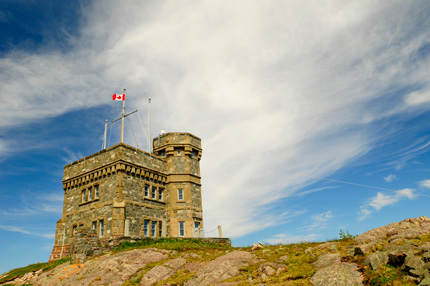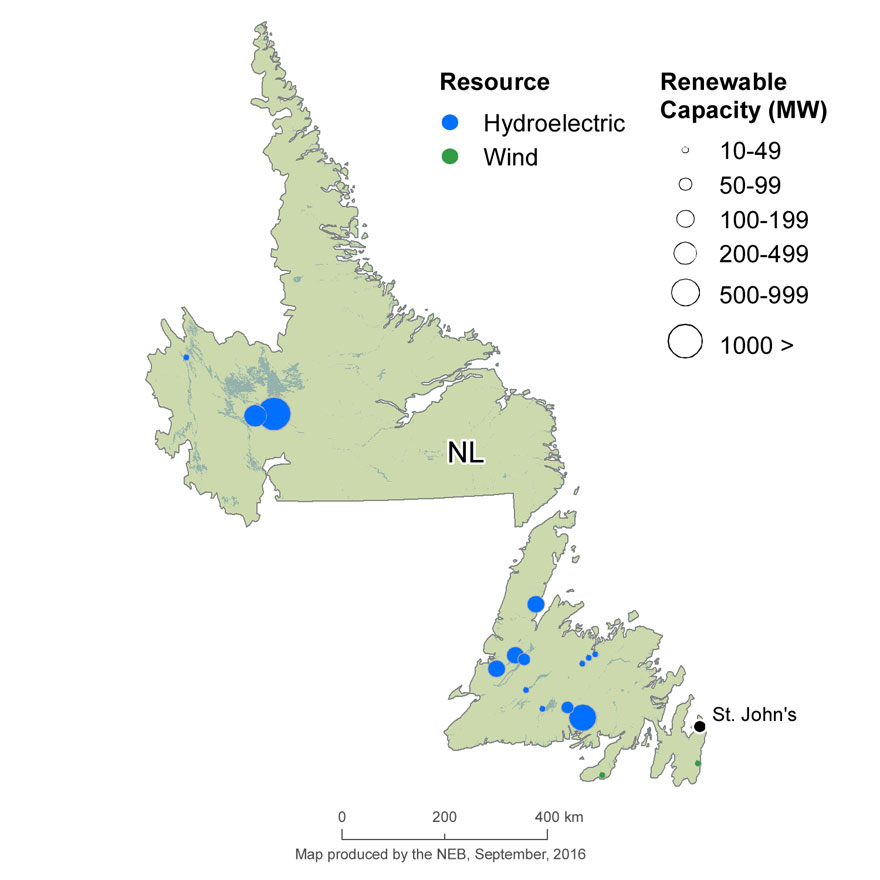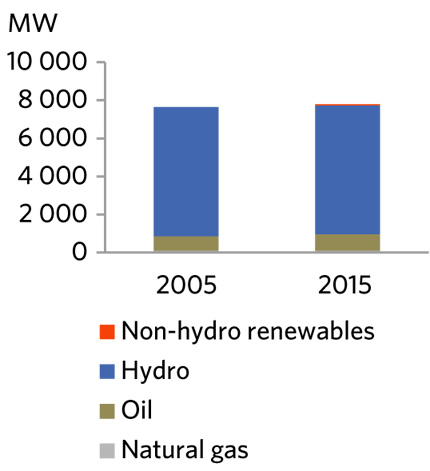ARCHIVED – Canada’s Renewable Power Landscape 2016 – Energy Market Analysis
This page has been archived on the Web
Information identified as archived is provided for reference, research or recordkeeping purposes. It is not subject to the Government of Canada Web Standards and has not been altered or updated since it was archived. Please contact us to request a format other than those available.

Newfoundland and Labrador
More than 95% of power generated in Newfoundland and Labrador in 2015 was renewable, primarily hydro. The province has vast hydro resources and is home to the 5 428 MW Upper Churchill Falls hydro-generating station, one of the largest power plants in Canada.
The energy from this facility is sold to Hydro-Québec under long-term contracts. In the last decade two wind farms totaling over 50 MW of capacity have also been developed.
Newfoundland and Labrador Hydro, a Crown corporation and subsidiary of Nalcor Energy, is responsible for most of the electricity generation and transmission within the province. Newfoundland Power, an investor-owned subsidiary of Fortis, is the primary distributor of electricity on the Island. Independent power producers operate the province’s two wind farms.
Construction is now underway on the Muskrat Falls (824 MW) hydroelectric plant. Initially, a portion of the electricity generation from Muskrat Falls will be surplus to Newfoundland and Labrador’s needs.
Newfoundland and Labrador’s bulk electric system presently includes the Island Interconnected System, which is isolated from the rest of North America, and the Labrador Interconnected System which is connected with Quebec. The two systems, which are currently isolated from one another, will be interconnected for the first time upon completion of the Labrador-Island Link transmission component of the Muskrat Falls Project. The associated Maritime Link transmission project will also interconnect the Island portion of the province with the North American bulk electric system via Nova Scotia.
Newfoundland and Labrador set out a GHG reduction target of 10% below the 1990 level by 2020. The long-term 2050 target, outlined in the 2007 Energy Plan, is to reduce emissions to 75-85% below 2001 levels. Renewable capacity additions help to meet those targets. For example, after Muskrat Falls begins production, Nalcor plans to retire the oil-fired Holyrood plant, which currently supplies between 15% and 25% of provincial demand.
| Capacity in MW and % | Generation in GW.h and % | |||
|---|---|---|---|---|
| 2005 | 2015 | 2005 | 2015 | |
| Hydro | 6 780 | 6 766 | 40 498 | 40 332 |
| 89% | 87% | 96% | 95% | |
| Wind | 0 | 54 | 0 | 189 |
| 0% | 1% | 0% | 0.4% | |
| All renewable sources | 6 780 | 6 820 | 40 498 | 40 521 |
| 89% | 88% | 96% | 96% | |
| All sources | 7 642 | 7 791 | 42 136 | 42 314 |
This table shows Newfoundland and Labrador's electric capacity and generation from renewables in 2005 and 2015. The share of hydro in total capacity decreased from 89% to 87% while the share of wind increased from 0% to 1%. The share of hydro in total generation decreased from 96% to 95% while the share of wind increased from 0% to 0.4%.
FIGURE 21 Renewable Resources and Capacity in Newfoundland and Labrador

Text version of this map
This map shows the location and approximate capacity of renewable power plants with a capacity of at least 10 MW across Newfoundland and Labrador. The majority of hydroelectric resources are spread out in Newfoundland, but the largest hydroelectric plants are situated in the western part of Labrador. The majority of wind resources are located in southern Newfoundland. There are no biomass or solar resources with a capacity of at least 10 MW.
FIGURE 22 Electric Generation Capacity in Newfoundland and Labrador

Text version of this graphic
This bar graph shows Newfoundland and Labrador’s total electric capacity in 2005 and 2015 for all fuel sources. Capacity increased from 7 642 MW to 7 791 MW, with renewables decreasing slightly from 89% to 88% of total capacity.

- Date modified:
